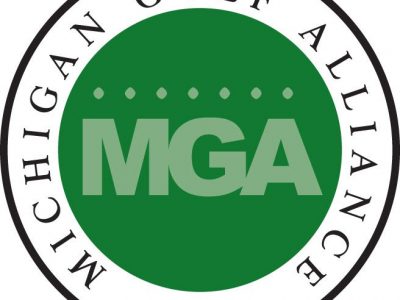By Kate Moore
It’s 6:00pm on any Wednesday evening from May to September. My back deck faces the third fairway of the Blue Course at Eldorado Golf Course in Mason.
Golfers. Golfers. They’re everywhere.
To borrow a well-known motto: “Neither snow nor rain nor gloom of night stays these golfers from the swift completion of their appointed rounds.”
These are the committed ones. The league golfers.
Leagues are big business in Michigan and in the Midwest. With roughly a six–month golf season, having these customers committed to the game, week after week, is a key component to most golf course business models.
As times have progressed, managing a golf league no longer utilizes the spreadsheet and a cigar box in which to hold the cash. With the technologies available for online league management, golf courses can handle any size, any type of leagues without even having to put pen to paper.
There are over 700 daily fee golf courses in Michigan, and rarely is there a course that doesn’t offer league golf. Whether men, women, couples or kids, league golf is a mainstay of our seasonal industry.
According to Jeff Hoag, owner of Scott Lake Golf and Practice Center in Comstock Park, leagues represent about one-third of all greens fees and cart revenue as his course. They form an important part of the business income foundation. League golfers are committed golfers and nationally, where leagues are present, they can represent up to 83% of all rounds and 85% of all dollars spent.
Because league golfers pay in advance, they play. Courses lose few rounds to afternoon rain, heat or mosquitos. League golfers want to play. It’s about the golf but it’s also about the camaraderie; there is not a more social sport. You walk or ride together, stand at the tee together. Order from the beverage cart together and gather at the end of the round to talk about that round and plan for the next. And what makes league golf so appealing for the golf course owners and operators is that most leagues play Monday through Thursday after 3:00, leaving the remainder of time, including high demand weekends, open for business.
When the fight to save daylight savings time reared its ugly head again this year, we turned to our statistics on golf leagues to indicate the importance of “keeping the lights on”. The Michigan state legislators were amazed at the economic impact shortening the golf day by even one hour would have on the golf industry. With an average of 13 leagues with 36 golfers each, that’s over a quarter million golfers every week, most of whom would lose out on their opportunity to play if the day were shortened. Fortunately, golf won this round.
When a new golf economic impact study was released in late April by the We Are Golf foundation, it laid to rest any lingering concerns about the economic resiliency of the golf industry. As leaders from virtually every sector of the business visited Congress and federal agencies for National Golf Day this spring, the report by TEConomy, announced a 22% growth in annual economic output related to golf from 2011-16 to $84.1 Billion.
Bottom line: leagues are a leading factor in the economic boon, especially here in Michigan. They are huge contributors to keeping golf available to all.
Kate Moore is the former Executive Director of the Michigan Golf Course Association.










